"Blue" Gene Tyranny as Beethoven
All Photographs © Phil Makanna

A LETTER FROM HOME
The Basic Chords, Improvisation For One Pianist
Live at Roulette, New York. December 1, 2004
“BLUE” GENE TYRANNY, Piano
DAVID WEINSTEIN, Recordist
Based on a simple progression of six chords, the harmonics of those chords are presented as roots of new chords making unexpected new chord combinations. This is unlike the procedure used for example by Ravel’s Boléro, which simply adds the harmonics to unchanging chords but creates a process whereby completely unexpected and surprising harmonies result. The chords are used both as a basis for improvisation by a solo performer and also form the basis for an extended composition titled “A Letter from Home” (1976) that can be heard in its entirety on Out of the Blue. There is a degree of freedom in the initial composition phase as well as the performance.
SPIRIT FOR PIANO
Natural And Artificial Harmonics
Live at Roulette, New York. December 1, 2004
“BLUE” GENE TYRANNY, Piano
DAVID WEINSTEIN, Recordist
TOM HAMILTON, Computer Editing
In Henry Cowell’s 1930 book New Musical Resources he describes how to create natural and artificial harmonics on the piano. Natural harmonics of course, are produced by soundlessly depressing keys in the right hand and playing and then releasing the same audible chord only an octave lower producing a ringing of those harmonics another octave higher. For artificial harmonics, however, the chord that is actually struck is an octave lower and a half step higher than the soundless chord in the right hand. This produces a very strange and unexpected series of tones that has an ethereal quality that is rarely used in composition. It’s difficult to project to an audience but is easily heard by the pianist. To create “Spirit”, both of these harmonics were recorded and then the artificial one was edited by computer to remove the loud striking of the left hand and only the otherworldly harmonics are left. These often sound as if they are electronically produced but in fact it is all made from this process. The progression of chords is followed by normal piano playing in various modes or scales in live performance while a recording of the harmonics is played at the same time. The title “Spirit” is a poetic reference to Cowell’s composition, “Banshee,” which is the name of a spirit–like figure in Irish mythology. The prepared sounds are placed at large intervals to give the live concert pianist the opportunity to improvise piano lines based on those chords. The sound is often surprising.
THE 36 CHORDS FROM THE DRIVER’S SON
Improvisation For One Pianist
Live at Roulette, New York. December 1, 2004
“BLUE” GENE TYRANNY, Piano
DAVID WEINSTEIN, Recordist
For The Driver’s Son, 36 Chords were associated with 36 subjects found in the written text. This created surprising new combinations of harmonies that went beyond the traditional modulations (diatonic, inharmonic, chromatic). This degree of freedom exists both for the moments of composition and performance. These chords are heard in their entirety in the five scenes of the audio storyboard, The Driver’s Son in this box set.
THE INVENTION OF MEMORY
Piano Introduction
Live at Roulette, New York. December 1, 2004
“BLUE” GENE TYRANNY, Piano
DAVID WEINSTEIN, Recordist
While I was reading The Seven Sins of Memory: How the Mind Forgets and Remembers by Daniel Schacter, it suddenly occurred to me that the author was also describing forms of musical composition. So, I wrote a chamber work for string quintet, piano, and guitar with text and vocal part. In those various forms correlating the type of memory with specific musical forms. Each musical form was also written in traditional Gregorian modes. The string part was completely written out. The piano was introduced as an additional timbre and the guitar part was written in an improvisatory style. “Inventions” is a traditional musical term employed by JS Bach and others for several millennia to describe one of the freer forms (such as divertimento, fantasy, etc), and here has a double meaning referring both to music and psychology. When this introductory part for piano is performed as a solo, the performer can freely skip from measure to a distant measure at will and insert improvisations within the mode. This is the original written introduction without any improvisations.
TIME TRANSPOSING PIANIST
A Letter from Home (Vertical Version)
Live at Roulette, New York, March 27, 1992
“BLUE” GENE TYRANNY, Piano
JEFF BERMAN, MIDI Vibraphone
BILL RUYLE, Marimba
DAVID WEINSTEIN, Recordist
The “time transposition” of the title refers to changing linear elements into vertical elements thus changing successive progressions into momentary sounds. This is the same sensation when a composer says, “I heard or felt the whole symphony in a moment and then wrote the whole thing out in time.” Here the pianist improvises upon vertical chords that were created by collapsing horizontal lines. The two percussionists on vibraphone and marimba provide the rhythmic pulse and are free to vary the meter and pulse as they wish.
LEROY JENKINS
ON THE ROAD TO BLOUNTSTOWN (A TRUE STORY)
Live at Roulette, New York. May 3, 2001
LEROY JENKINS, Viola
“BLUE” GENE TYRANNY, Piano
MARY GRIFFIN, Lyrics
DAVID WEINSTEIN, Recordist
Leroy Jenkins and several singers and I had finished a concert and there were still ten or so minutes to go but we had no prepared material. Leroy leaned over to me and said, “Just follow what I’m doing”. What came next was an instance of purely spontaneous improvisation. I had never heard before what Leroy was going to play but what resulted seemed as if it had been scored. Leroy began with this recollection of an incident from his early years and touring in the South and one evening encountering a sheriff who perhaps imagined he had a clever sense of humor. I learned later that this story had been written up by Mary Griffin intended to be used and sung in a later composition by Leroy, although he was often reluctant to sing in public.
DREAMTIME: IN THE PAST
Recorded at Systems Research Center, Palo Alto, CA
1980
“BLUE” GENE TYRANNY, Synth and Recordist
“Dreamtime” refers to the indigenous Australian expression. The Dreaming is used to represent the concepts of “time out of time” or “everywhen”, during which the land was inhabited by ancestral figures, often of heroic proportions or with supernatural abilities. This simple piece of music has been used for several different theatrical productions by the Otrabanda company and the Talking Band. This shows that music and text can be fluid in their relationship to each other.
DREAMTIME: IN THE OUTBACK
Recorded at Systems Research Center, Palo Alto, CA
1980
“BLUE” GENE TYRANNY, Synth and Recordist
The use of the didgeridoo recalls the indigenous Australians’ remarkable discovery on how to survive for centuries in the so–called wasteland. This music has also been employed in several theatrical productions using various contextual references.
DREAMTIME: BLUE MOON RYE
1986
“BLUE” GENE TYRANNY, Synth and Recordist
This fantasy combines the names of three composers: “Blue” referring to the nickname I’m often called by my friends, “Moon” refers to Moondog’s wonderful music many pieces of which began with street improvisations and were later recorded by ensembles on major labels, and “Rye” refers to Terry Riley who invented what I call pattern music. A celestial atmosphere pervades the music here and also refers to a Blue Moon, which is usually the second full moon in a month.
PETER GORDON & LOVE OF LIFE ORCHESTRA
TANGO FOR BAND
Recorded at Butler Street, Brooklyn, NY
December 1985.
THE LOVE OF LIFE ORCHESTRA
Conducted by PETER GORDON
“BLUE” GENE TYRANNY, Piano
JON GIBSON, Saxophone
RICHARD LANDRY, Saxophone
LENNY PICKETT, Saxophone
NELSON BOGART, Trumpet
PETER ZUMMO, Trombone
NED SUBLETTE, Guitar
LARRY SALTZMAN, Guitar
RANDY GUN, Guitar
TONY GARNIER, Bass
MUSTAFA AHMED, Congas
DAVID VAN TIEGHEM, Drums, Percussion
ERIC LILJESTRAND, Recordist
To Carla Bley, with fond appreciation
Originally written for piano, this piece was orchestrated for Peter Gordon’s wonderful Love of Life Orchestra with whom I had the joy to play and tour with for several years. When a fellow musician heard this recording she said she remarked that the musicians must have improvised their parts and I said that no, in fact most everything had been notated except for some graphics to indicate special effects, although all of these musicians were very fluent in spontaneous improvisation. Sometimes for the listener it is a mystery to solve which method was employed to impromptu sounding music.
ANY FINE AFTERNOON
Recorded at Music Annex, Menlo Park, CA
May 28, 1983
“BLUE” GENE TYRANNY, Pianos
KENN BECKMANN, Recordist
While I was working in Palo Alto as an audio technician I created many soundtracks for in–house videos, mostly concerning new computer mathematics and inventions. This piece, the editor Kenn Beckmann and I realized that the basic rhythmic track could use additional piano so we went to a San Francisco recording studio on a “fine afternoon” and wound up recording a three piano piece spontaneously over the rhythm track that created a joyous rhythmic complexity as a piece on its own.
MEDITATION FOR TRIO AND CHAMBER ORCHESTRA
Two Performances Mixed Together (1963, 1993)
ONCE Festival Ann Arbor Community Center, Ann Arbor, MI
February 17, 1963
BOB JAMES, conductor
ONCE Festival ensemble
GEORGE CACIOPPO, Recordist
Cooler in the Shade Summer Festival
Lotus Music and Dance Studios, New York, NY
July 28, 1993
JEFF BERMAN, Vibraphone
BILL RUYLE, Marimba
BOB BIELECKI, Recordist
This piece is heard here as two combined realizations of my first graphic piece performed live with acoustic instruments on two concert dates separated by several decades but realized from the same initial source. This shows that in truly new music we may play the same piece but at the next performance it may sound completely different. To say it another way, as composers we design the car but we don’t tell you where to drive it. That metaphor occurred to me spontaneously as my friend Robert Ashley was being interviewed by a German TV crew several years ago in NYC. I believe Robert liked that comment.
SLEEPING BEAUTY IN CAMOUFLAGE
1992
“BLUE” GENE TYRANNY, Synth and Recordist
The “sleeping beauty” of the title is a metaphor for the brain that awakens spontaneously producing an idea, an inspiration, an image, etc. In the interim the mind is quiet or “camouflaged” by relative quiet or other activity. Although originally written for acoustic instruments (piano, vibraphone, marimba) and performed that way, the unison “walking bass line” which also plays the part of a melody led to rhythmic complications following the selective omission of notes based on coinciding cycles of the sun, anomalistic moon (between perigees = 27.555 days), and the growth proportions of the Saquaro cactus (30:24:15). So a more rhythmically precise version for a slightly larger ensemble was electronically generated here and also made way for spontaneous instrumental “remarks” by these additional instruments. This led to a compositionally unexpected breaking up of the continuous melodic line. This is similar to arithmetically counting forwards and backwards at the same time. Our “sleeping beauty” emerges.
“My father’s name was William, Bill or Ben. He drove a taxi, the only one in town. That’s why I’m called the driver’s son.”
This is the whole piece rather than just the chords from the piece from the third track of the first volume of this box set. The 36 subjects can be combined to make many stories and this piece is just one possible combination. These chords are heard descending from above.
THE DRIVER’S SON
For five performers: vocal, piano, synthesizer, percussion
1989
Intro
Scene I: Tim Disappears, John Follows the Clues
Scene II: The Happy Landing
Scene III: Trooper Ralph
Scene IV: The Center of my Universe
Scene V: The Desert
Live at Roulette, New York
May 7, 1999
“BLUE” GENE TYRANNY, Piano
NURIT TILLES, Electric keyboard
JONATHAN HART MAKWAIA, Vocals
JEFF BERMAN, Percussion
BILL RUYLE, Percussion
DAVID WEINSTEIN, Recordist
The chords ascend again to the heavens.
THE DRIVER’S SON
Interlude
Scene V
Live in Philadelphia. November 15, 1990.
TOM BUCKNER, vocalist
EDMUND NIEMANN,piano
“BLUE” GENE TYRANNY, piano
JEFF BERMAN, midi-vibraphone
BILL RUYLE, percussion
PAUL SHORR, electronics
The following pieces are a list of possibilities for what was discovered in the desert
HE WAS HERE
1998
“BLUE” GENE TYRANNY, Synth and Recordist
This piece was made from electronically processed natural sounds imagined by clues on the road seen by John as he is searching for Tim who disappeared in the night. This piece is dedicated to Jim Horton.
THE DE–CERTIFIED HIGHWAY OF DREAMS
Live in Missoula, MT
October 10, 1992
DOUBLE EDGE, Piano Duo
NURIT TILLES
EDMUND NIEMANN
Route 66 no longer appears on new maps but once stretched across cornfields, deserts, cities to shores from Chicago to Santa Monica, and was the “Gateway to the West” from its birth in 1928 until a last patch of it near Williams, Arizona was “de–certified” (to use Federal Government cant) in 1984. The highway inspired art and legend about the community of thousands who both traveled it and provided services on the way. This composition, based on winding melodies created for an early version of the audio–storyboard “The Driver’s Son”, describes a search, where intuition jogs back and forth with intention. Several techniques generate the rhythmic and harmonic structures — the call–and– response, telegraphic introduction (the “tune–up”) employs a steady rhythmic shifting (a “mobile”) in simple 4/4 meter; hocketing rhythms create a stereo bouncing effect (“something in the air”); and modified serial techniques gradually modulate the primary harmonies into rich dissonances, and modify the rhythms from smooth linear progressions to severe angularities (“potholes”, “stalled in traffic”, “pulled over by the trooper”). Timbre contrasts help to evoke changing imagery (“roadside attractions” etc., the specifics provided as always by the listener), while long streams of melody (“joyrides”) stretch out into the vast distance.
THE GREAT SEAL
Live in New York
April 30, 1990
DOUBLE EDGE, Piano Duo
NURIT TILLES
EDMUND NIEMANN
The five sections of this piece, commissioned by the piano duo Double Edge, are musically-encoded situations, each with a particular emotional expression. Each section is some combination of rhythms derived, using Morse code, from the three thirteen letter mottos imprinted on the obverse and reverse sides of The Great Seal of the United States, with pitches gathered from a ballad composed originally for the dance “Proximology” by Timothy Buckley. This is descriptive of John searching for Tim.
BARN FEVER
Live at Jacob’s Pillow
July 14, 1984
“BLUE” GENE TYRANNY, Piano and Synth
DANCERS
Timothy Buckley
Thom Fogarty
Rocky Bornstein
Karen Pearlman
This is version two of the piece that originally premiered at the Kitchen performance space in New York on December 23rd, 1983.
TANGO FOR TWO
“The More He Sings, The More He Cries, The Better He Feels ... Tango”
1984
“BLUE” GENE TYRANNY, Piano and Electronic Orchestra
This emotional piece about an emotional gesture was originally written for The International Tango Collection (Quadrivium Music Press) as a solo piano piece. It has also been realized in an orchestration (1985) for vocal (wordless), trumpet, two tenor saxes, trombone, baritone sax, electric guitar, mandolin, electric bass, piano, synthesizer, and drum set and as a live recording at the Steirischen Herbst Festival, Graz Austria, October 2, 1985, was released as on Tellus audio cassette magazine #16 in 1986. All the parts (harmonic, melodic, rhythmic) of this composition are designed to illustrate one central dynamic gesture: the gradual modulation (elasticity) of tension to extremes of large and small duration and pitch intervals, and the de–modulation back to an equilibrium. This modulation is not a metaphor, but a physical imitation of what happens when a certain kind of tension, described by the title, is generated. To realize this process, the melody is modulated in pitch and rhythm, the tango bass line is modulated in pitch only, and its counter–rhythm is modulated in rhythm only. Within these general progressions, there are many microvariations that subtly increase and decrease tension. The harmonies become increasingly varied in psychological modality and in timbre as the roots modulate chromatically, stretching downward. At the conclusion of the orchestrated version, a coda summarizes the essence of the composition: the trumpeter plays a slow glissando that stretches up and then rebounds downward in pitch as he simultaneously tongues (freely) faster to a sustained tone and then gradually tongues slower. The other instrument perform similar stretches of pitch and rhythm.
WE ALL WATCH THE SUN AND THE MOON (FOR A MOMENT OF INSIGHT)
Live at Cooper Union, New York
May 8, 1992
NURIT TILLES, Piano
Ritual adoration or simple belief in the spiritual qualities of the moon guided early Paleolithic, ice age hunter–gatherer societies until approximately 5000–6000 BCE when the numbers of game animals began to die out. Attention then shifted to the sun’s yearly growing cycles with the beginning of permanent settlements, more complex social interaction, agriculture, and architecture. Many monuments throughout the world, such as Stonehenge built about 3000 BCE, as well as implements (e.g., Magi hats of gold embossed with precise lunar and solar schedules) were constructed to record both the moon and sun cycles and their representative deities, thus stabilizing the difficult transition between periods for the respective cultures. Several contemporary cultures, such as the Tibetan, still actively employ the moon calendar. All of the events (notes) in this composition are based on the rhythmic interference of cycles of the sun, anomalistic moon, as in “Sleeping Beauty in Camouflage.” Listeners may experience a performance of this piece as a song being newly constructed in the present, or as a song written long ago (and camouflaged by forgetfulness) that is slowly unfolding as it is remembered or revealed in bits and flashes. At each of 17 cadence points, progressively greater light shines. The completely realized song is presented at point 18, and followed by a gradually fading resonance (coda). The original piano piece (1992) was commissioned and premiered by the extraordinary pianist Nurit Tilles. At its premiere, Nurit explained to the audience that this music was “like watching the grass grow.”
DAYLIGHT SAVINGS
1980s
“BLUE’ GENE TYRANNY, Piano
A spontaneous improvisation on a well–known tune about baseball that got completely transfigured in the playing. But the results of the playing are somewhat typical of the way my many improvisations turned out at that time. Again, there is no way to describe any passing intention that would from moment to moment guide the notes that came after the piece began so if there is a program or method of doing this, it is buried deep in my consciousness.
DRIVING MUSIC
1991
From the dance piece “Black Box” by Stefa Zawerucha performed at Dance Theater Workshop, New York, 1991 This is one section of a piece that was filled astonishing illusion by dance movement and lighting effects produced by David Fritz. In this particular scene, dancer Stefa Zawerucha seemed to be gradually descending into a world filled with animal noises of all kinds (not heard here) over this electronic piece. All of the dances that Stefa and David produced contained illusions of many kinds and I was always amazed at how they realized their imaginative places combined with the unusual, original movements.
THE NED SUBLETTE BAND
LEADING A DOUBLE LIFE
Recorded at RPM Studios, New York
1986
“BLUE” GENE TYRANNY, Piano
TIM SCHELLENBAUM, Guitar
LLOYD MAINES, Steel Guitar
JIMMY DANIEL, Drums
JEFF MYERS, Bass
LENNY PICKETT, Tenor Saxophone
STEVE ELSON, Baritone Sax
STAN HARRISON, Alto Saxes
NED SUBLETTE, Vocals
DAVID STONE, Engineer
This song was one of several written for the 1976 show “Trust in Rock” at the University of California Art Museum in Berkeley, CA. Since then it has appeared in four other settings or arrangements including two by composer–vocalist Ned Sublette and two by “Blue” Gene Tyranny, each with a different “flavor”. It is heard here with a 12/8 beat similar to a gospel tune, although Ned remembers this as Texas triplets, “which are probably really New Orleans triplets but dried out a little bit.” This song was also used in separate dances by Timothy Buckley and Thom Fogarty.
CONFESSION
AKA Solving Scriabin's Mystic Chord
Live at Roulette, New York
April 15, 2010
“BLUE” GENE TYRANNY, Piano
CONRAD HARRIS, Violin
To Anna Ekmark
ARCHAEOACOUSTICS #1 (The Shining Net)
Recorded at the Center for Contemporary Music
1977
This electro–acoustic procedure was originally a design, entitled Archaeo–acoustics (Harmonic Fields of Unknown Peoples), for ringing and processing the “standing waves” in ancient, relatively enclosed spaces (such as menhirs, root cellars, decorated caves, etc.) which were created by little–known or unknown cultures. Processed recordings of this procedure create harmonic and melodic “portraits” unique to each space or field site. The microphones are moved precisely at various angles and velocities, and recordings are made until all the nodal points are covered. The sound at this point is of pure waves of various pitches which occasionally shake and create small melodies as waves cross acoustically. The recorded waveforms are then cross–modulated through electronic gates — channel A modulates channel B, and vice–versa. Bell–like sounds occur which emphasize the nodal crossing points, and when all the tracks are presented in a multi–channel mix, a “shining net” of sound architecture in motion appears. The tonalities inherent in the space are brought out, and may suggest a psychological modality, perhaps one that would affect people within the space. For example, some people, including this composer, have a tendency to talk at the resonant factor(s) of a room. This realization of the piece was recorded in an asymmetrically constructed room at the Center for Contemporary Music in Oakland, California.
WOODEN NICKELS
Live at the Canterbury House, Ann Arbor, MI
1968
“BLUE” GENE TYRANNY, Hammond Organ
VIVIAN SHEVITZ, Bass
RICHARD DISHMAN, Drums
DENNIS (CODY SPARKS) O’BRIEN, Guitar
JOHN LITTLEJOHN, Tenor Saxophone
STEVE MCKAY, Saxophone
PETE KAHN, Alto Saxophone
GEORGE LUCE, Flugelhorn
CARTER (BUZZ) THRELKELD, Trumpet
This was my first attempt at writing a jazz piece for small band and unlike the Tango there were several parts where there were occasions for improvised solos. Unfortunately none of those were captured in this live recording. The chord structure was repeated as in any normal song form and also used to create the coda which has the brass playing a cascading figure. The title still makes me smile after all these years but I don’t know why.
HOW TO SWING A DOG
Live at Dance Theater Workshop, New York
October 3, 1984
“BLUE” GENE TYRANNY, Synth
ROGER BABB, Voice
The words and music express the feelings of a dog being swung on a rope held between his teeth, something no cat appreciates. An otherworldly boogie seemed to be the only appropriate music for this. The boogie is interrupted by a dizzy spell of the dog being swung and this gives time for the dog to meditate on his momentary condition. And then the boogie starts again. This is a live improvised performance.
MARY GRIFFIN & "BLUE" GENE TYRANNY
RECOLLECTIONS, SONGS FROM APHASIA
The Word
Speech
The Road Trip
Orpheus
Live at Roulette, Brooklyn
April 13, 2016
Produced by Providence Productions International, Inc. in association with IAM — International Aphasia Movement, Inc. Carlota Schoolman, Director. Special thanks to IAM participants, Jamie Dearing and David Weinstein.
MARY GRIFFIN, Lyrics
CHRISTOPHER BERG, Conductor/Music Director
DIANA SOLOMON GLOVER, Soprano
MAGDA GARTNER, Mezzo
PETER STEWART, Baritone
ERIC BARSNESS, Bass
CONRAD HARRIS, Violin
PAULINE KIM, Violin
LEV ZHURBIN, Viola
ALEXANDER WATERMAN, Cello
JAMES ILGENFRITZ, Bass
“BLUE” GENE TYRANNY, Keyboard Synthesizers
TOM HAMILTON, Post Production Mix
These are four songs selected from the recent production that depicts the remarkable improvement created through “melodic intonation” whereby people who have momentarily acquired speech difficulties are able to regain full speech articulation by singing familiar tunes. This is another possible use of music as a “cure”. The production of this piece involved four singers, stringed instruments, pre–taped video interviews with people at various stages of Aphasia and stage effects. Performances were well attended by people at various stages of Aphasia and who I believe appreciated this momentary affliction being understood. The text was drawn from many remarks that people with Aphasia had made. Aphasia does not impede their mental abilities. The music for the introductory tune (one of nine songs) titled “The Word” gradually evolves from a full setting of the biblical quote from the gospel of St. John to fragmentary techniques including rhythmic offsets or sliding of melodic fragments backward and forward from their initial accents. The text and emotions for “Speech” describe in more detail many feelings that occur because of this condition and is set for both tenor solo and a chorus which replies to this text. “The Road Trip” makes extensive use of what is called heterodyning which is an old practice in music whereby a melodic line is broken up into parts for two or more vocalists or instruments. This technically gives rise to what I call a “phasing” of vocal and instrumental parts in which for example, the second measure of a rhythm (in this case a version of a tango) is super imposed upon the first measure of that same rhythm. This creates a stereo effect among the voices and also a lively rhythmic interchange among the accompanying instruments that sounds as if it has been made by several different rhythms but in fact was generated from a single basic idea. This further illustrates the confusion felt by persons on a road trip not exactly knowing where they are or the names of persons.
HARVEY MILK (PORTRAIT)
1979
“BLUE” GENE TYRANNY, Electronic Processing (Krohn–Hite Hi–Pass Filter)
FRANKIE MANN, Recordist
This piece is from a speech which Harvey Milk gave in front of the San Francisco Civic Center Plaza which was recorded by Frankie Mann on November 4, 1978. The text was then analyzed for its rhythmic and pitch characters electronically. In “Part I — The Action”, we hear Milk’s moving speech opposing the repressive Proposition 6 which had been placed on the California state ballot — this measure would have started a witch hunt to fire public school teachers who spoke of gay lifestyles, or were even rumored to have homosexual friends, and so on. Ringing filters tuned in micro–intervals were triggered by Milk’s voice creating a bell–like “tracing” or “shadowing” spectrum. The negative–going envelope shadowing the voice shuts down the circuit when the people start to shout and cheer, and then there is a small melodic sweep as the filter momentarily resets In “Part II – The Feeling”, a resonant and constantly changing memory circuit (an open tape loop arrangement in this case) accumulates the bell–like sounds from Part I, re–cycles and intermodulates them in waves butterflying across a stereo field. Because of the tuning of the resonant (Hi–Q, microtunable) filters, a vibrato gradually develops that sounds like the cooing of pigeons and doves. Thus, in Part I, the listener concentrates on the external event with a hint of the emotional response heard, and in Part II the concentration is shifted to (an analog of) the internal, kinetic state of the listener, or, in other words, the feeling of meaning. A year later, on November 27th, 1979, this same city was the scene of a candlelight procession in memory of mayor George Moscone and supervisor Harvey Milk who had both been fatally shot by former policeman Dan White who employed the infamous “Twinkie” defense. Immediately, after White’s trial, there followed the so–called “White Night Riot” in downtown San Francisco, which became the subject of another tape piece by me. Soon afterward, White, freed to the custody of his family, committed suicide.
THAT THEN, NOW THIS
Live at Merkin Hall, New York
April 1, 1991
“BLUE” GENE TYRANNY, Piano
LARRY SALTZMAN, Guitar
THE FORECASTER HOPES
Synthesized Orchestra and Solo Bass Clarinet
“BLUE” GENE TYRANNY, Synthesized Orchestra, 2016
JOHN SACKETT, Bass Clarinet, 2019
History can be realized in two directions: toward an imagined future (weather casts, what–if? fiction, etc) or toward a hypothetical past (speculative archaeology, revised chronologies, etc). The Forecaster Hopes follows the first of these time projections. No one can foretell the exact future but many people feel compelled to offer their best guesses and sincere hopes. There is always a myriad of interacting circumstances the outcome of which are unpredictable. As some advertisements say, “past performance is no guarantee of future benefits.” However many hopes generate unexpected responses, no matter what the outcome may be in the future. Each member of the orchestra has a specific job and character: the voices vary in two parameters, pitch and rhythm, marking the current and changing intensity (pitch) of the passing moment, the 16 solo strings present a field of quasi–random rhythms derived from an electronic analysis made in the 1960s of natural, everyday sounds. On a smaller scale, in the brain’s basal ganglia, quasi–random events similarly occur which give rise to musical feeling, intuition, and spontaneous calculation. The gifts of the forecaster. The invariant drums mark the passing of time–as–pulses. At the opening, the soloist presents the basic pitch, rhythm, and dynamic language by which he or she wants to be told about the possible outcomes of the future, given current conditions.
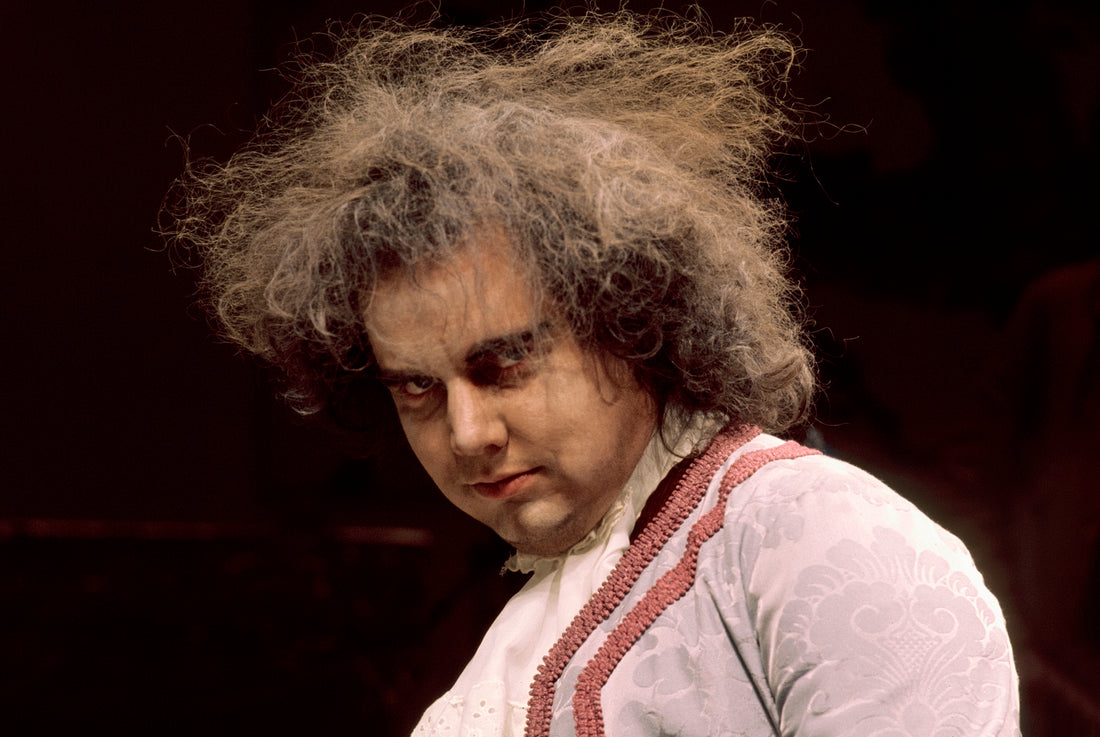
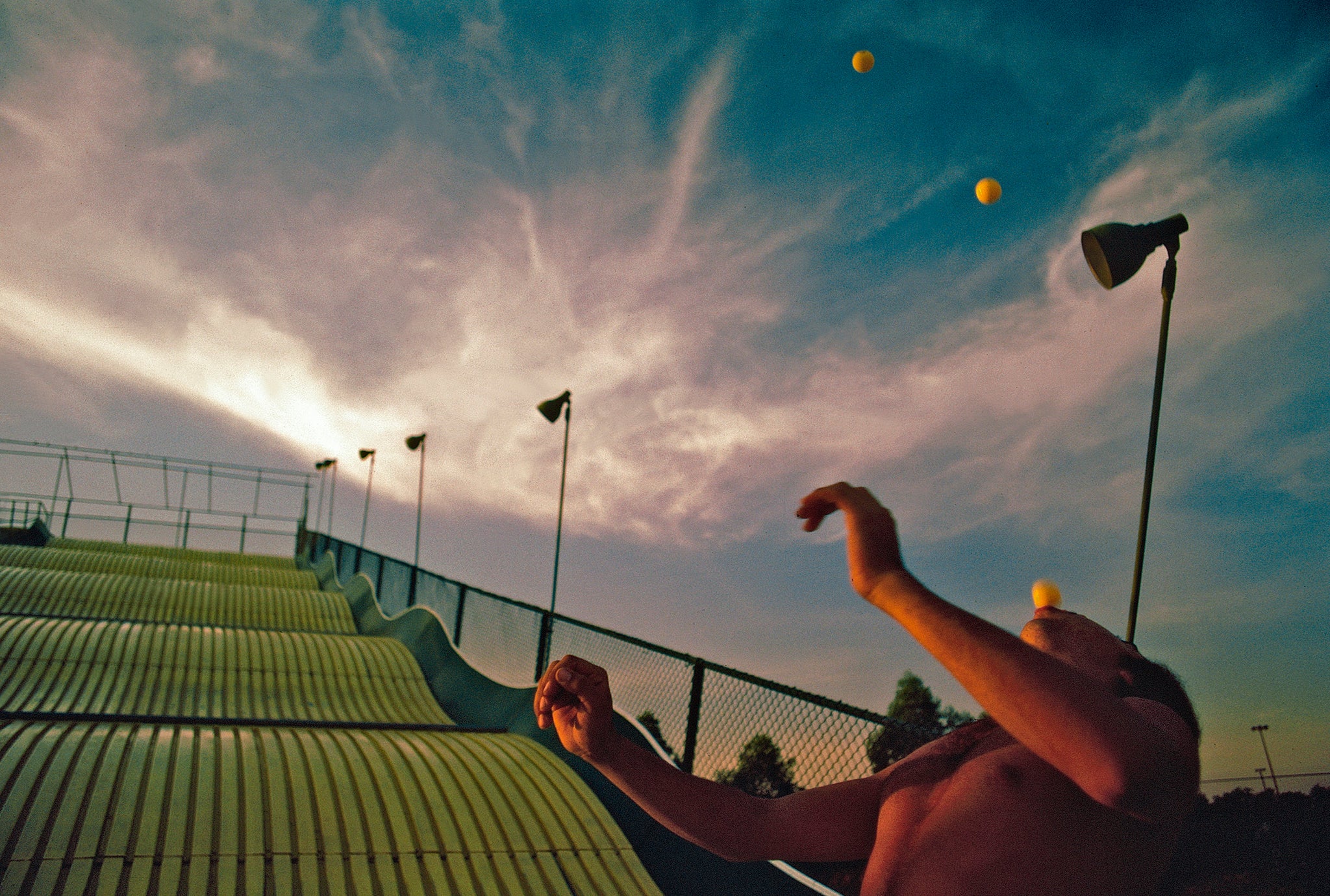




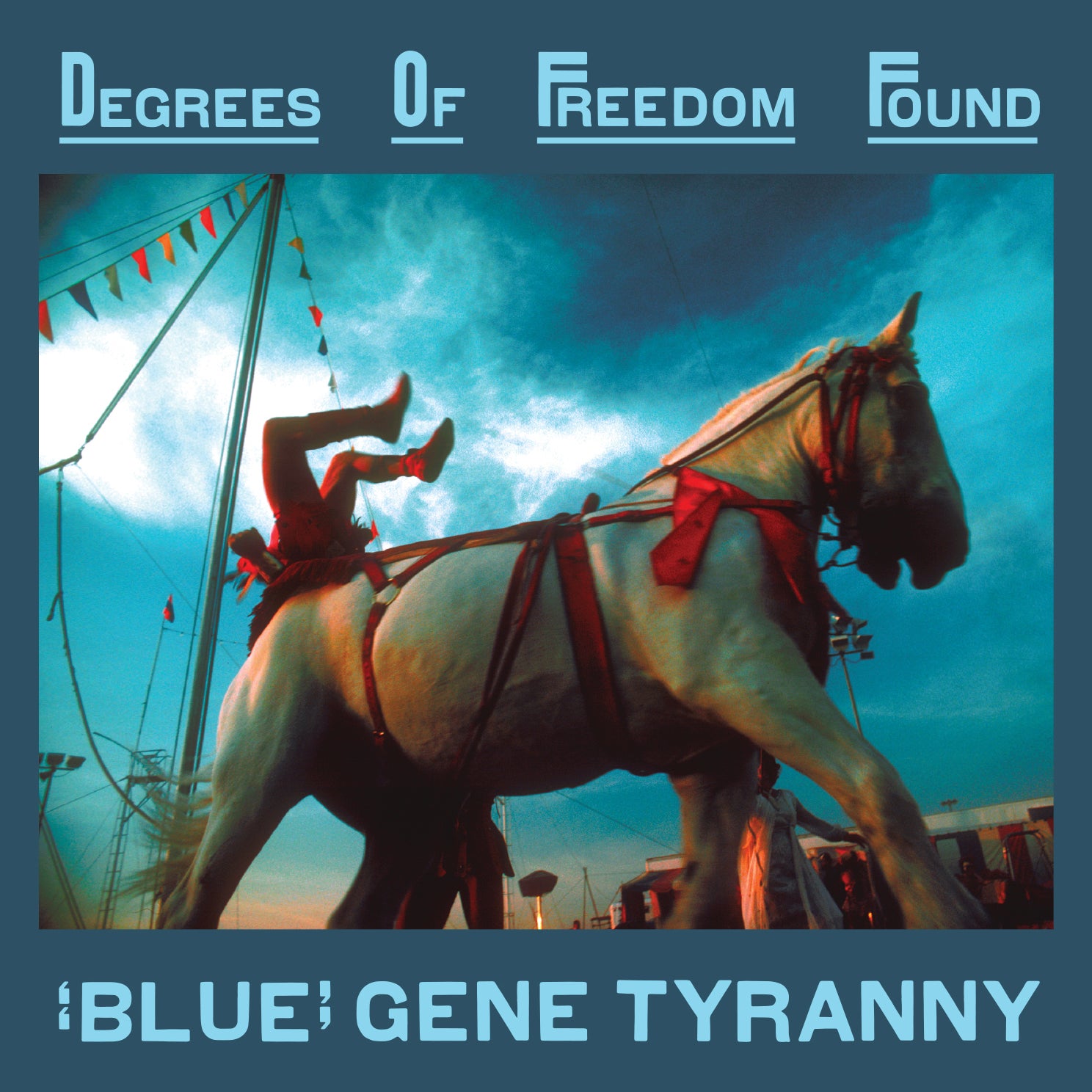
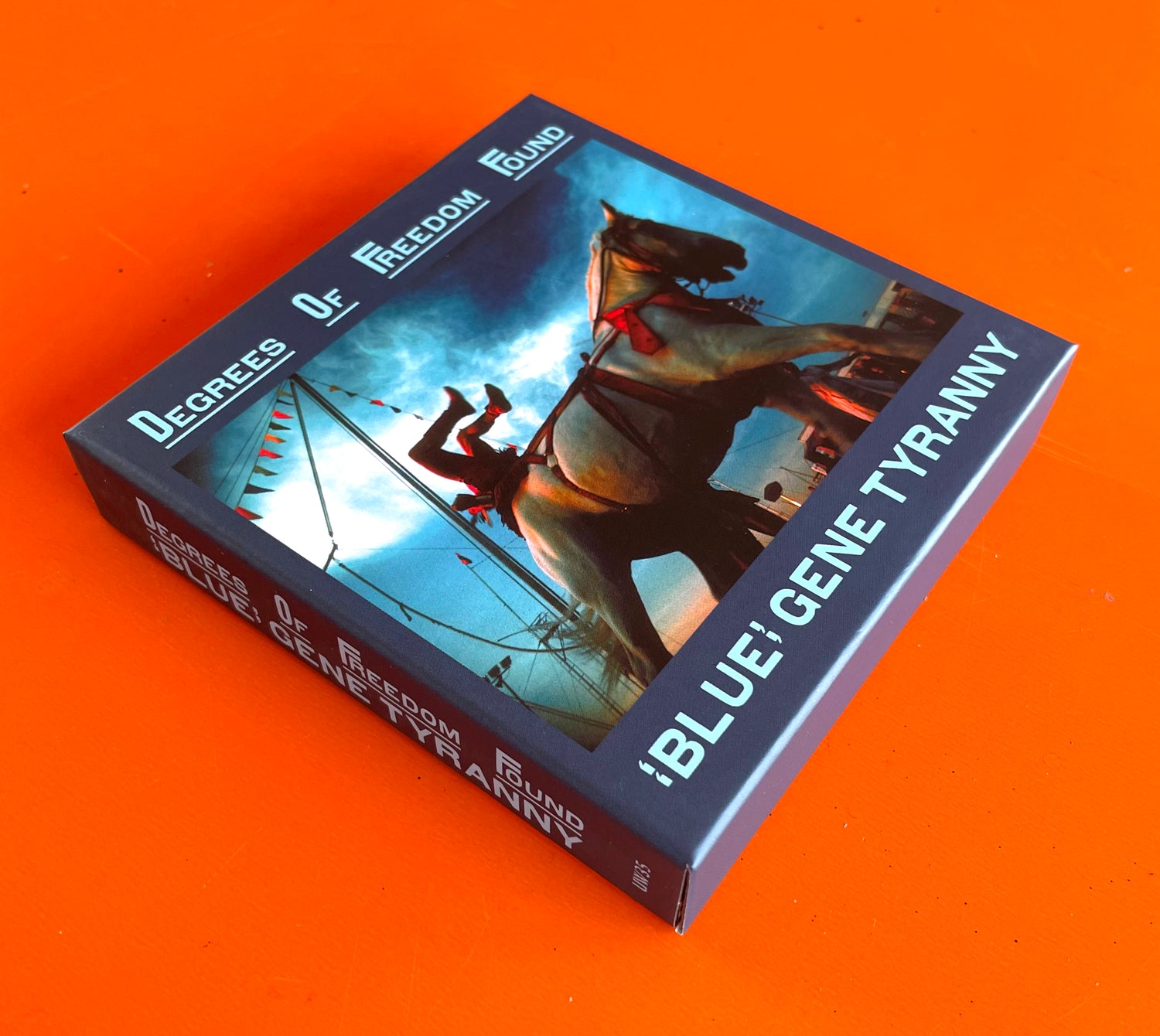
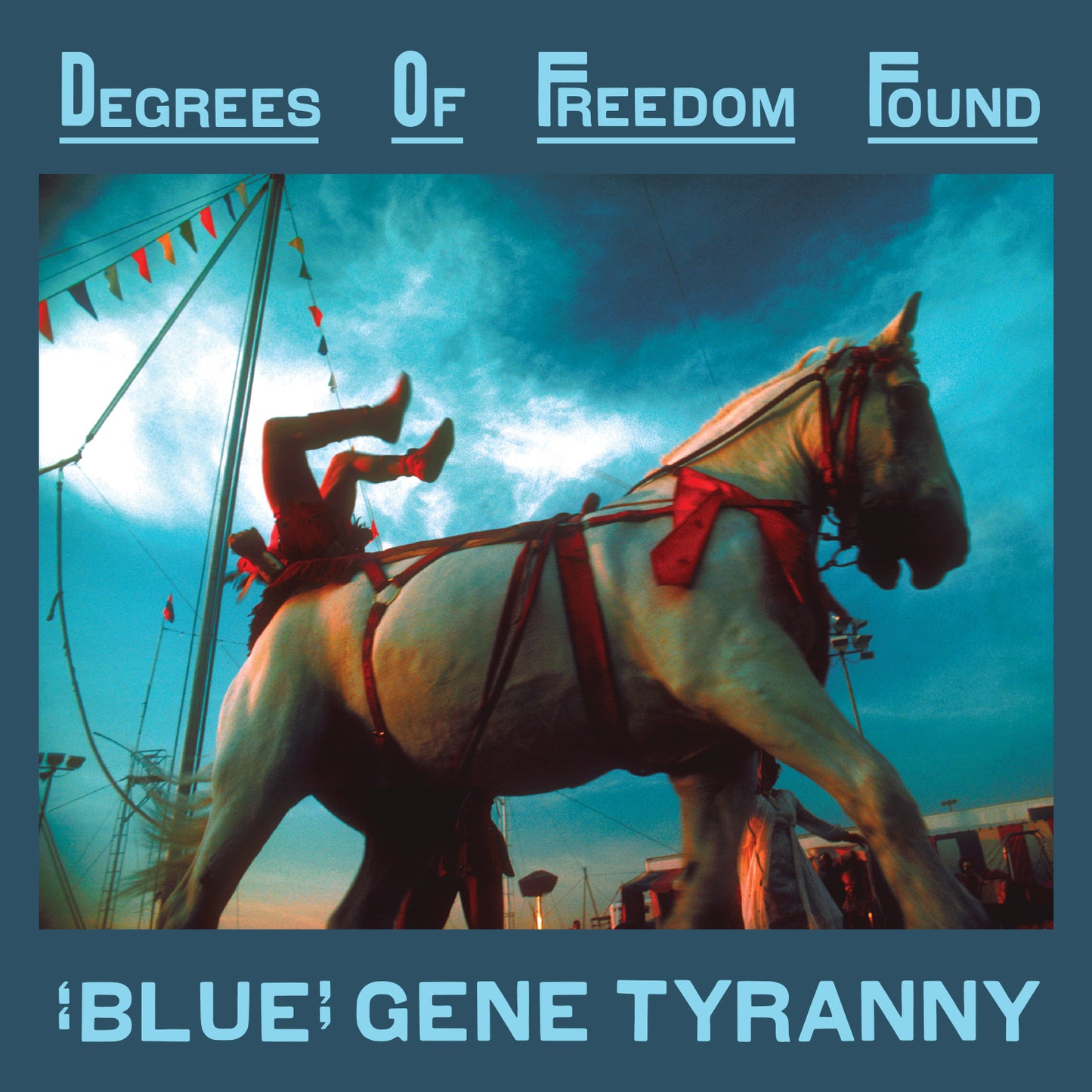
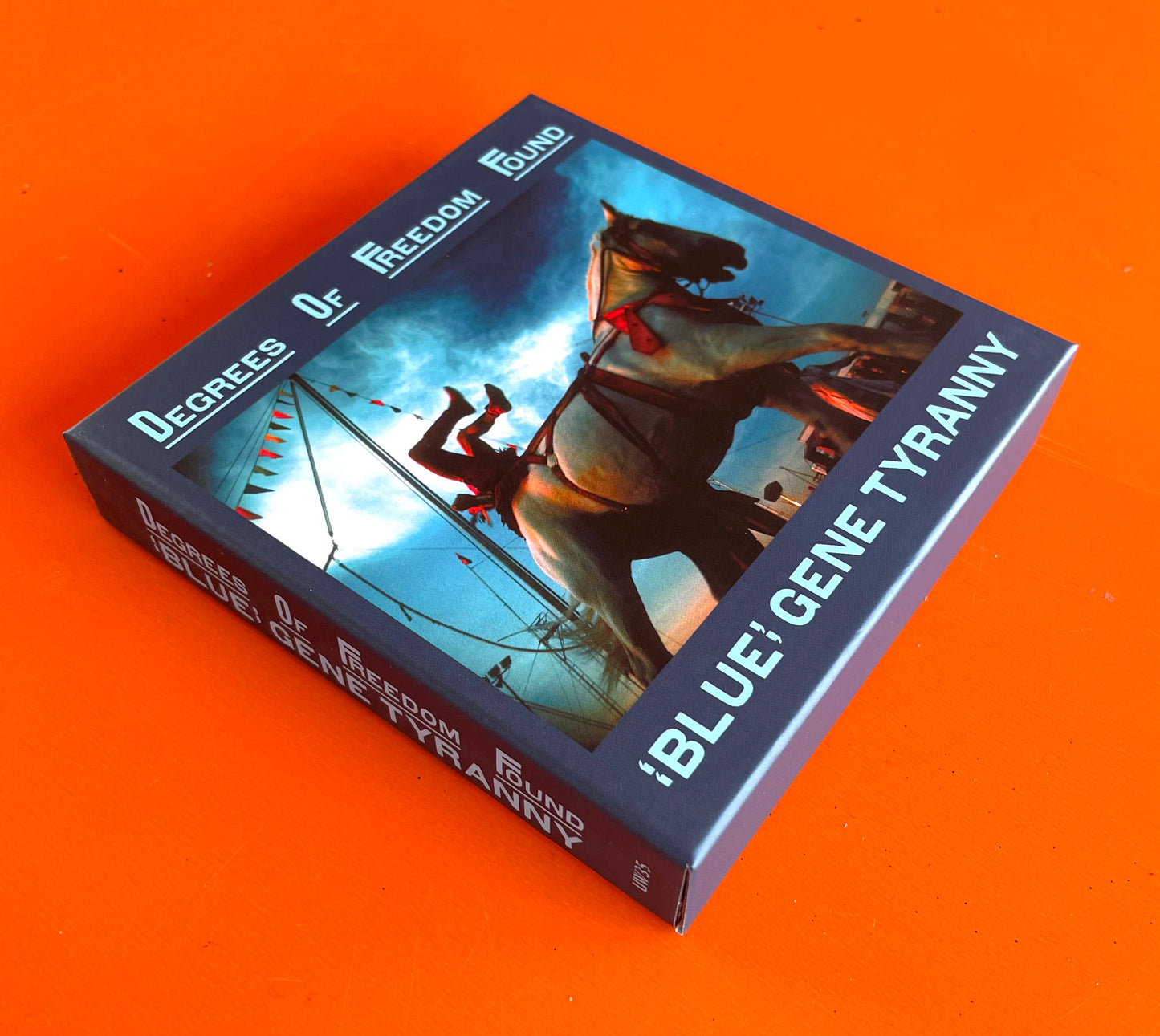
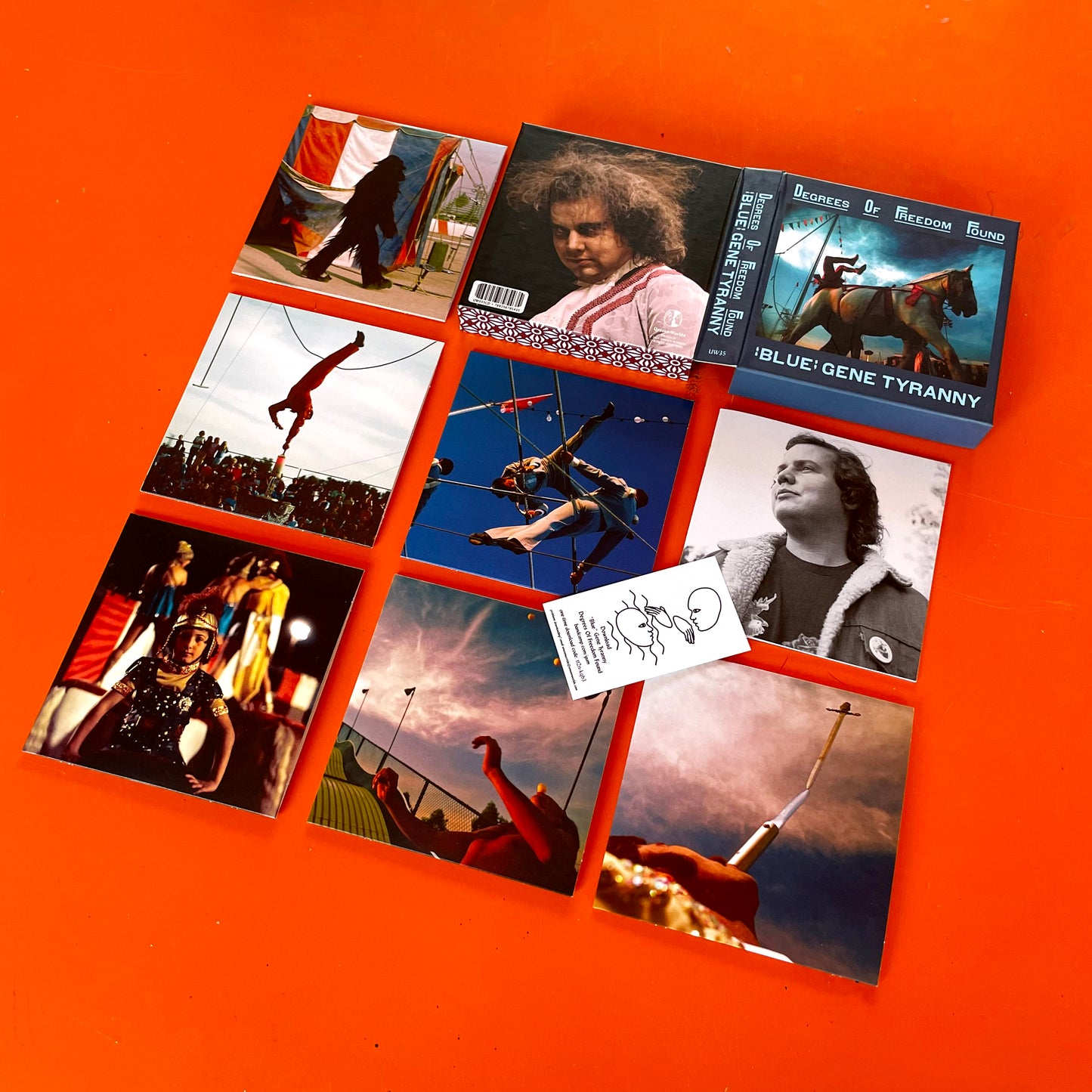
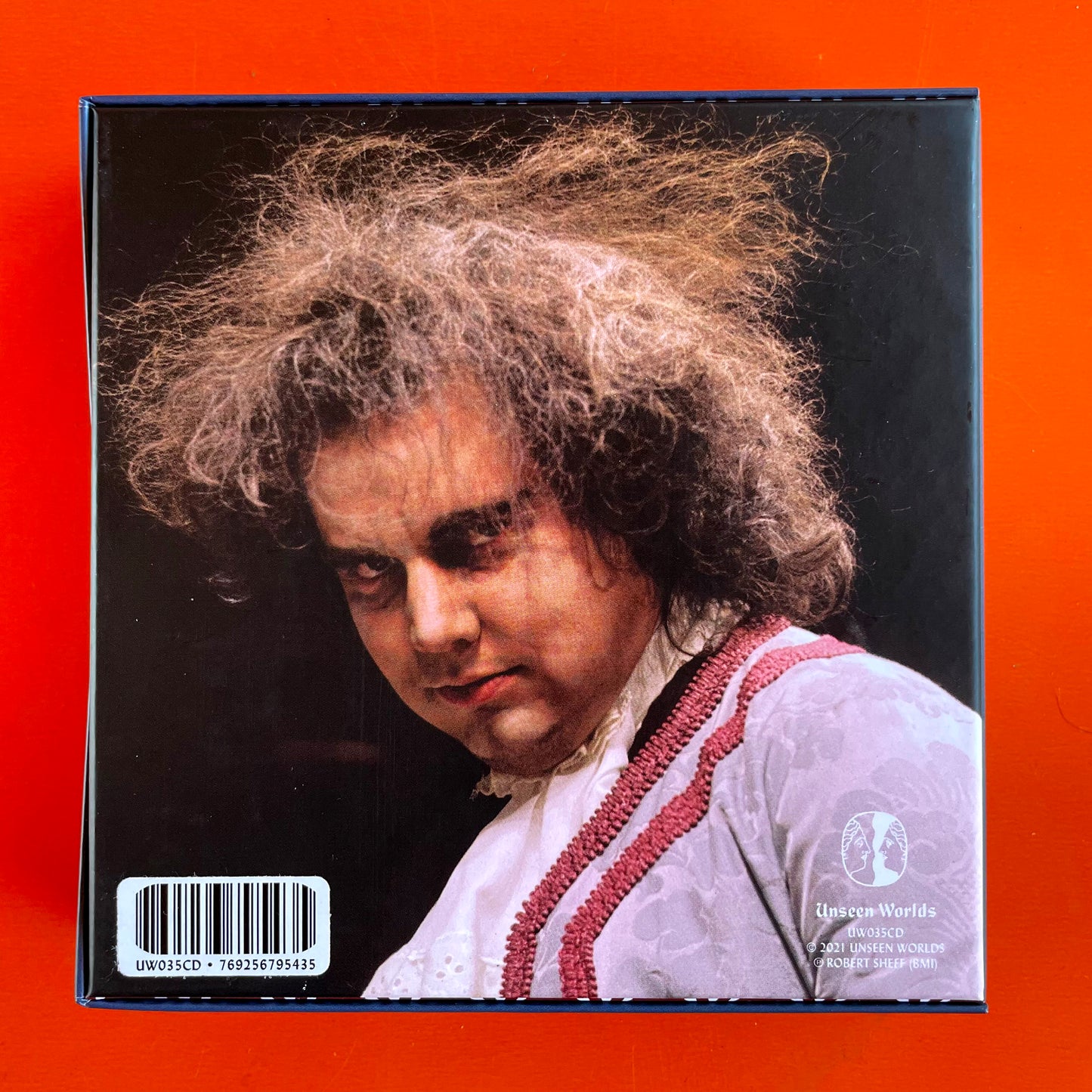
![[product title] - unseen worlds](http://unseenworlds.com/cdn/shop/products/compUW24LP-Hi-Res-2_533x.jpg?v=1566370078)
![[product title] - unseen worlds](http://unseenworlds.com/cdn/shop/products/UW18_Hi_Res_533x.jpg?v=1566320538)
![[product title] - unseen worlds](http://unseenworlds.com/cdn/shop/products/UW07CoverHiRes_533x.jpg?v=1566370077)